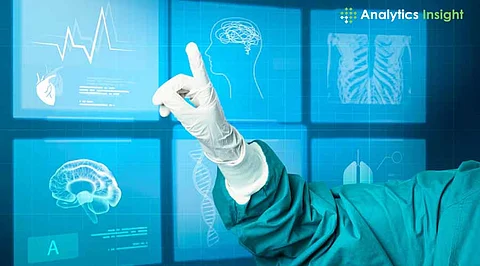

Treating or curing a disease requires understanding patterns. AI excels at pattern recognition. It can analyze millions of data points in seconds. It spots subtle correlations humans might miss. But AI isn't replacing doctors. It's transforming their role in unexpected ways. It's reversing the diagnostic workflow entirely.
This shift goes beyond making diagnoses faster. It rewires the entire diagnostic process. It transforms physicians from diagnosticians to verification specialists. It creates an entirely new medical decision-making model.
Situational diagnosis is based on an action sequence. The physician, at first, conducted a check-up on the patient. They developed the first assumptions. Appropriate studies were then assigned for proofs. Only then came the final diagnosis that triggered treatment.
Today's advanced hospitals use a completely different approach. AI systems analyze medical images first. They immediately suggest potential diagnoses. Physicians then verify these AI conclusions. The diagnostic flow now runs backward.
This diligence saves precious time in the course of decisive conditions. Now, the primary of a doctor lies in evaluating algorithmic suggestions and knowing when to trust the machine.
AI's growing diagnostic role creates a new physician identity: the verification specialist. These doctors are tasked with honing and perfecting skills focused on evaluating algorithmic outputs. Decisions on critical judgments about when to override machine suggestions.
This reconceptualization of medical skill will have significant ramifications. Future physicians won't be valued mainly for pattern recognition. Machines increasingly handle this better. Their value comes from navigating between algorithmic suggestions and unique patient factors.
Most medical schools haven't adapted to this new reality. Consequently, the expertise mismatch is getting bigger. Applicants are not able to undergo formal training in verification and rely on experience in the workplace to develop the required skills. The next generation may need entirely different educational models.
AI diagnosis demolishes traditional information hierarchies. When AI identifies a condition, it alerts the entire care team simultaneously. This creates what researchers call "distributed cognition" across healthcare teams.
Diagnostic information no longer filters sequentially through specialists. Radiologists and surgeons receive the same AI outputs at the same time. This fundamentally changes team coordination and communication patterns.
This synchronicity among the mentioned observations is capable of propelling treatment decisions within a very short time. It is a game-changer in the healthcare setting by giving authority to members while completely relegating medical hierarchies. The system favors collaborative assertion over sequential handovers. It eliminates the vertical structure of medical services, empowering all staff to provide patient care.
An overlooked implication is the emerging "verification gap" in global healthcare. AI diagnostic tools can operate anywhere with sufficient technology. But verification expertise remains concentrated in advanced healthcare systems.
This creates an unexpected dynamic in healthcare development. Rural and developing regions may soon access AI diagnostics that exceed local verification resources. This could create new dependencies where diagnostic data flows to distant verification experts.
The most progressive step in this situation is distribution verification capacities be distributed. Technology must be transferred not only with prevention of healthcare disparities in mind but also with the verification of AI systems. In the absence of verification training, AI might help only in increasing the disparity of healthcare instead of skillfully reducing it.
AI's impact on diagnosis goes deeper than improved accuracy. It reverses traditional workflows. Physicians now verify AI findings rather than build diagnoses from scratch. This transforms the core nature of medical expertise.
The future physician needs new skills. They must evaluate algorithmic outputs critically. They must identify when AI gets it wrong. Medical education must evolve rapidly to teach these verification skills.
The biggest challenge isn't technology. It's redefining what makes a good doctor. When machines make the first call, medical expertise becomes about judgment rather than pattern recognition.
